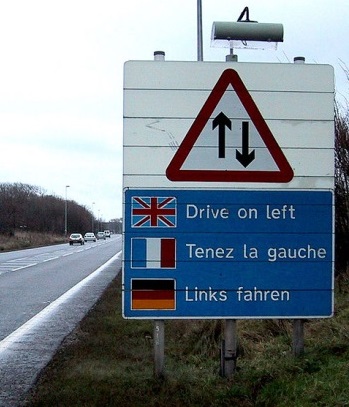为什么英国人靠左行驶?


你有没有想过,为什么英国人靠左行驶?
See_also: 托马斯-贝克特这是有历史原因的;这都是为了让你的剑手保持自由!
在中世纪,当你骑马旅行时,你永远不知道你会遇到谁。 大多数人都是右撇子,所以如果一个陌生人从你的右边经过,你的右手就可以在需要时使用你的剑。 (同样,大多数诺曼底城堡的楼梯是按顺时针方向向上旋转的,所以防守的士兵就可以围绕扭曲的方向向下刺,但那些攻击(上楼)不会。)
事实上,"靠左行驶 "的规则甚至可以追溯到更久远的年代;考古学家发现的证据表明,罗马人在左边驾驶马车和马车,而且众所周知,罗马士兵总是在左边行军。
这一 "道路规则 "在公元1300年得到正式认可,当时教皇博尼法斯八世宣布,所有前往罗马的朝圣者应靠左行驶。

这种情况一直持续到17世纪末,当时大型马车开始流行用于运输货物。 这些马车由几对马匹牵引,没有司机的座位。 相反,为了控制马匹,司机坐在左后方的马背上,从而使他的鞭子的手保持自由。 然而,坐在左边使他难以判断对面的交通情况,因为任何一个人都有在英国蜿蜒曲折的小道上驾驶过左手驾驶汽车的人都会同意!
这些巨大的马车最适合加拿大和美国宽阔的空间和大的距离,1792年在宾夕法尼亚州通过了第一部 "靠右行驶 "的法律,后来加拿大和美国的许多州也纷纷效仿。
在法国,1792年的一项法令命令交通保持 "共同 "的权利,拿破仑后来在所有法国领土上执行了这项规则。
See_also: 不安静的坟墓在英国,对这些大型马车的需求并不多,而较小的英国车辆在马的后面有供司机坐的座位。 由于大多数人是右撇子,司机会坐在座位的右边,这样他的鞭子的手就可以自由了。
18世纪伦敦的交通拥堵导致了一项法律的通过,使伦敦桥上的所有车辆都靠左行驶,以减少碰撞。 这一规则被纳入1835年的《公路法》,并在整个大英帝国得到采用。

在20世纪,欧洲有一个统一道路法的运动,并开始逐渐从靠左行驶转向靠右行驶。 最后一个从左到右的欧洲人是瑞典人,他们在1967年9月3日Dagen H(H日)一夜之间勇敢地做出了改变。 在凌晨4点50分,瑞典的所有交通在重新开始之前停止了10分钟,这次是靠右行驶。对。
今天,只有35%的国家靠左行驶。 这些国家包括印度、印度尼西亚、爱尔兰、马耳他、塞浦路斯、日本、新西兰、澳大利亚以及最近在2009年的萨摩亚。 这些国家大多是岛屿,但在陆地边界需要从左到右改变的地方,通常是通过交通灯、跨线桥、单行系统或类似的方式来完成。

